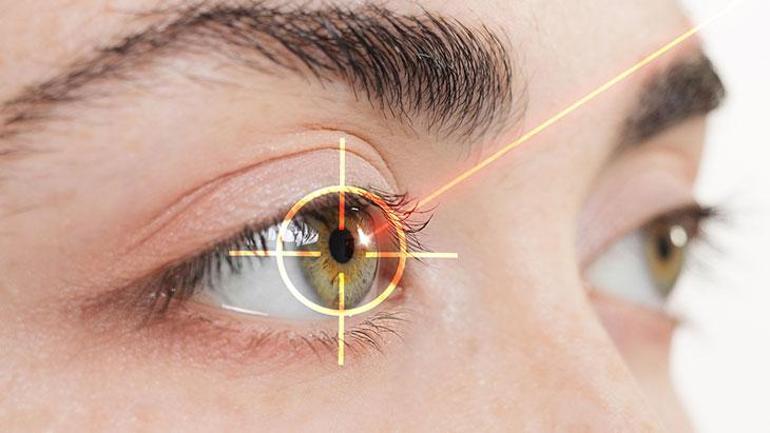A delicate method that makes you forget about your glasses! It's performed with a 3-4 millimeter incision.

Blurred vision at distance or near, headaches, eye strain, squinting to see better… These problems, which can significantly reduce quality of life, are often caused by myopia and astigmatism, the most common visual impairments today. Both refractive errors, which have become increasingly common in recent years due to prolonged screen time, are being corrected with laser eye surgery, eliminating the need for glasses and contact lenses. Furthermore, the bladeless and flapless SILK (Smooth Incision Lenticule Keratomileusis) procedure, which has been available globally since 2023 and in our country for the past year, offers significant benefits to patients.
Provides extra security
Ophthalmologist Prof. Dr. Banu Coşar explains that SILK surgery, the newest eye laser method for treating myopia and astigmatism, involves a mere 3-4 millimeter incision, maximizing the preservation of the cornea's natural structure. "This allows patients to experience a more comfortable and rapid recovery," she says. "There's only a slight stinging sensation after the procedure that lasts a few hours. Patients experience no pain and discomfort, so they can return to their normal routines the same day. The method also provides extra safety by preserving the corneal structure more effectively than traditional methods."

The procedure is performed with a 3-4 millimeter incision.
In flap laser surgery, a thin flap (lid) is created on the corneal surface. This flap is then lifted, and a laser is applied to the corneal tissue immediately beneath. The laser corrects vision defects by changing the shape of the cornea. Finally, the flap is closed back into place . This procedure is typically performed through a 25-30 millimeter incision. In the bladeless and flapless SILK (Smooth Incision Lenticule Keratomileusis) procedure, all procedures are performed through a small 3-4 millimeter incision. Unlike the flap laser procedure, instead of creating a flap (lid) on the front layer of the eye, a thin tissue (lenticule) is removed from the cornea to focus light accurately on the retina. This minimal incision preserves the eye's natural structure.
There is no risk of flap displacement
In laser surgery with a flap, the flap can slip out of place. This slippage often occurs in the early postoperative period due to factors such as improper flap placement during the procedure, harsh eye rubbing, trauma to the eye, or infection. Flap slippage can cause blurred vision, discomfort, pain, and light sensitivity. Immediate intervention is necessary; otherwise, it can lead to permanent vision problems. In the SILK method, Since no flap is created, there are no risks such as flap migration.

Dry eyes can be prevented
The risk of postoperative dry eyes, a common side effect of flap laser surgery, is also minimized with this method. Ophthalmologist Prof. Dr. Banu Coşar says, "With the flap laser method, the drying effect of the laser is enhanced because the procedure is performed through a larger incision of 25-30 millimeters. The risk of dry eyes in the first six months after surgery is lower with the SILK method because the procedure is performed through a smaller incision. Therefore, the SILK method is particularly preferred for those experiencing dry eyes."
Possibility of returning to normal life on the same day
The SILK procedure, performed on both eyes, takes approximately 15 minutes. Myopia is corrected by up to 10 degrees, and astigmatism by up to 5 degrees. Full visual clarity is achieved within a few days. Ophthalmologist Prof. Dr. Banu Coşar emphasizes that because all procedures are performed through only 3-4 millimeter incisions, the procedure provides a more comfortable and rapid recovery compared to traditional laser surgery. She continues:
The stinging sensation in the eyes after surgery subsides within a few hours, and patients can return to their normal activities the same day. The most important rules for effective treatment include avoiding vigorous eye rubbing in the first few days, using the prescribed eye drops regularly, and avoiding swimming in pools or the sea for a few days.

Who is the method suitable for?
Not every patient is a suitable candidate for the SILK (Smooth Incision Lenticule Keratomileusis) procedure. It is generally ideal for individuals over the age of 18, with a stable eye size for at least one year, and a normal corneal structure. SILK is not recommended for patients who are pregnant, breastfeeding, or have certain eye conditions such as glaucoma, as the healing process is affected. During an eye examination, the patient's eye size, corneal thickness and map, eye pressure, and detailed corneal structure are examined. These tests determine whether the patient's eyes are suitable for the SILK procedure.
The results make you smile
The SILK method also has a very high success rate. In fact, the success rate is 95 percent, meaning that 95 out of 100 patients who undergo SILK laser treatment eliminate the need for glasses. The method offers a permanent solution, but some people may experience minor changes in their prescription vision over a very long period.
milliyet




